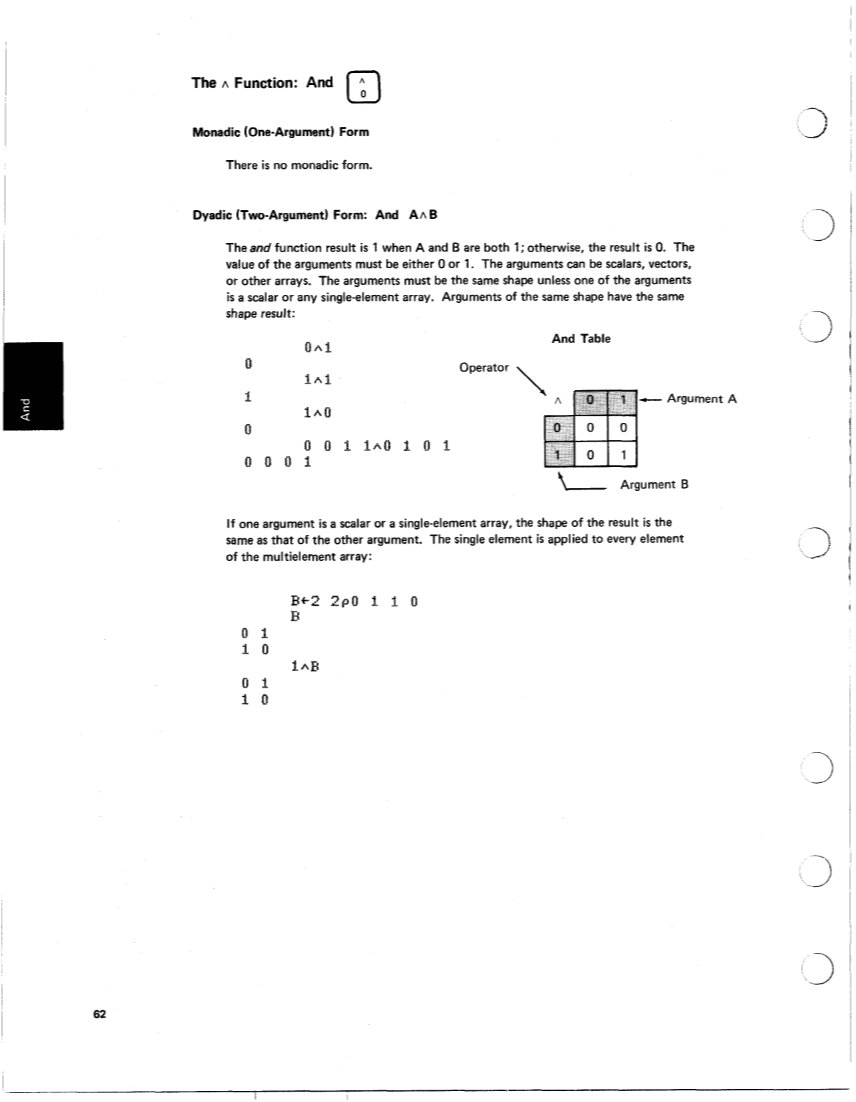I El
The A Function: And
Monadic (One-Argument) Form
There is no monadic form.
Dyadic (Two-Argument) Form: And AA B
The and function result is 1 when A and 6 are both 1; otherwise, the result is 0. The
value of the arguments must be either 0 or 1. The arguments can be scalars, vectors,
or other arrays. The arguments must be the same shape unless one of the arguments
is a scalar or any single-element array. Arguments of the same shape have the same
shape result:
And Table
0 A
1.
Operator \
0
Argument A
f- Argument B
If one argument is a scalar or a single-element array, the shape of the result is the
same as that of the other argument. The single element is applied to every element
of the multielement array:
i
62
The A Function: And
Monadic (One-Argument) Form
There is no monadic form.
Dyadic (Two-Argument) Form: And AA B
The and function result is 1 when A and 6 are both 1; otherwise, the result is 0. The
value of the arguments must be either 0 or 1. The arguments can be scalars, vectors,
or other arrays. The arguments must be the same shape unless one of the arguments
is a scalar or any single-element array. Arguments of the same shape have the same
shape result:
And Table
0 A
1.
Operator \
0
Argument A
f- Argument B
If one argument is a scalar or a single-element array, the shape of the result is the
same as that of the other argument. The single element is applied to every element
of the multielement array:
i
62









































































































































































































































